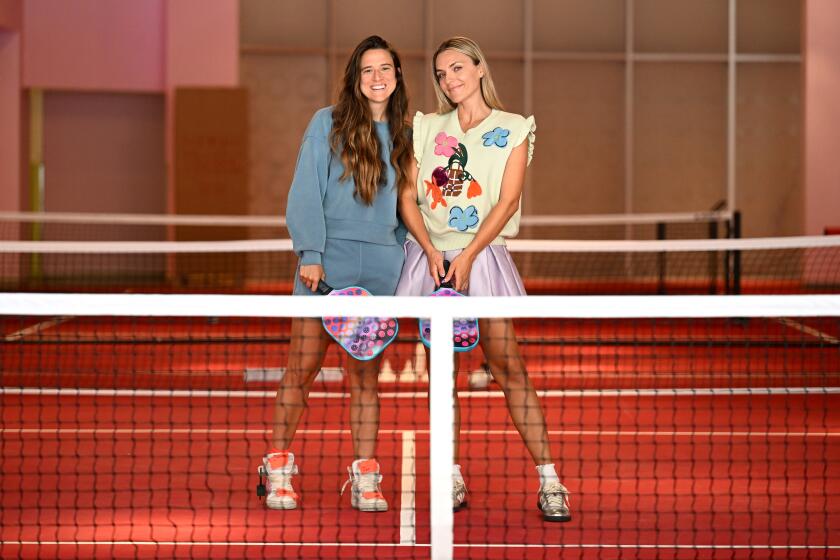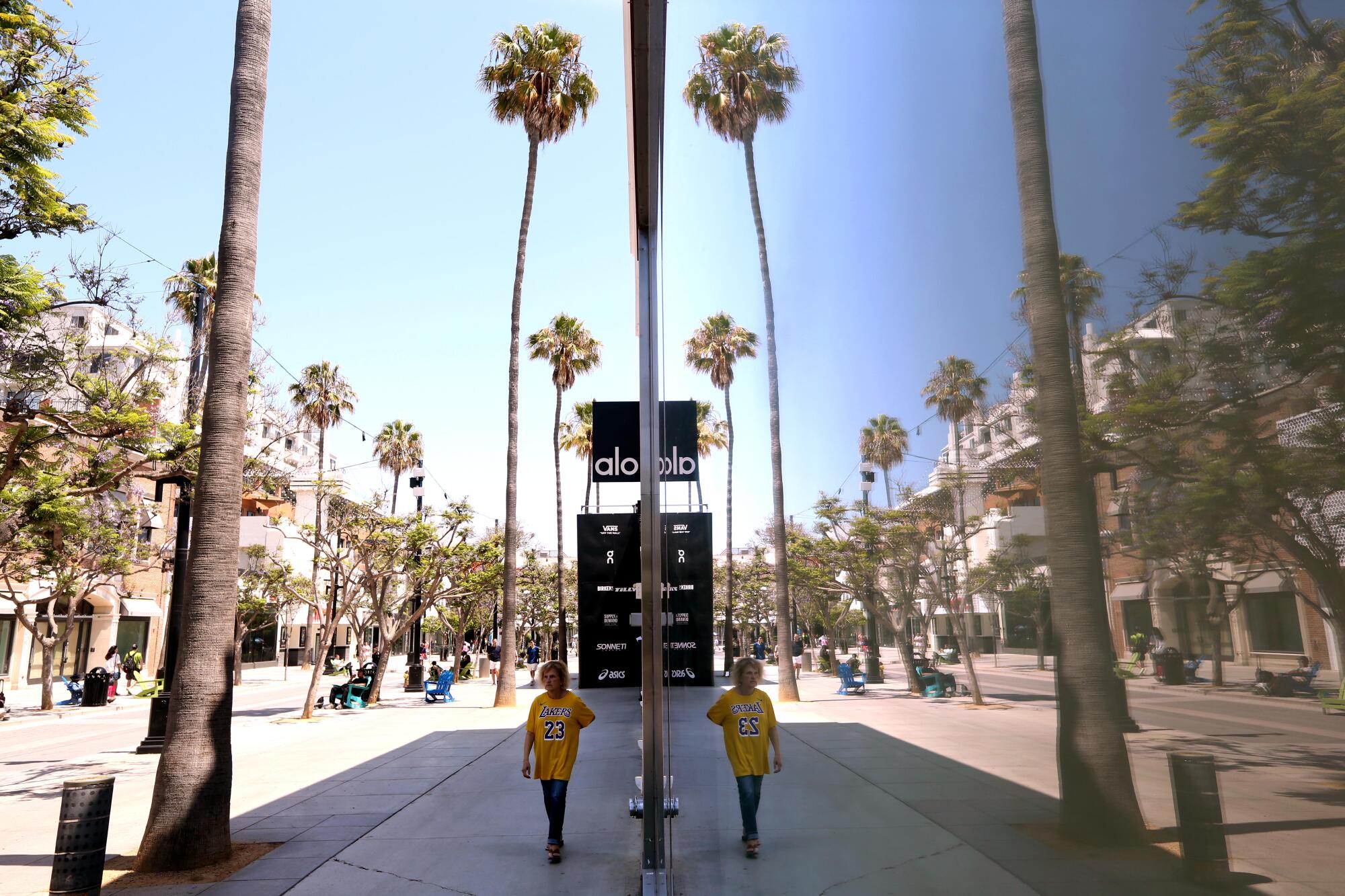
- Share via
Once Santa’s Monica’s signature destination for shopping and dining, the Third Street Promenade is showing its age.
Its decline has left the promenade’s landlords and city officials trying to counter years of stagnation, public safety concerns and fast-changing retail norms in an attempt to breathe new life into it.
The climb back to commercial viability is steep. Foot traffic at the pedestrian mall that teemed with locals and tourists during its heyday in the 1990s has been thinning for years, dropping by more than a third since 2019. “For rent” signs front a discouraging number of empty stores.

The reasons for the Promenade’s troubles are many and layered. Although, like many shopping districts and malls, it took a beating during the pandemic as shoppers stayed at home, its economic troubles predate COVID-19.
The Promenade, which has had few improvements since a renovation 35 years ago, was allowed to grow “tired and old,” real estate consultant David Greensfelder said. Its scale also presents challenges, as the mall’s unusually large stores are hard to fill in an era when many big retailers are reducing their footprints.
And issues and perceptions around public safety are also at play.
The Promenade’s reputation took a hit on May 31, 2020, when protests in response to the murder of George Floyd devolved into violence and ransacking of stores. More than 100 businesses, many of them on or near the Promenade, were damaged or destroyed, said Santa Monica Mayor Phil Brock. In the years since, crime trends have been mixed in the city with robbery and shoplifting rates up slightly last year compared with 2022 and declines in several other categories. High-profile robberies in the region and an increase in the number of people living on the street in Santa Monica, meanwhile, have contributed to the sense among some that the Promenade is unsafe.
“We’re not only trying to fight the actual crime that’s occurring because it is, but we’re also trying to rehabilitate this perception of safety in Santa Monica,” said Santa Monica Police Lt. Ericka Aklufi.
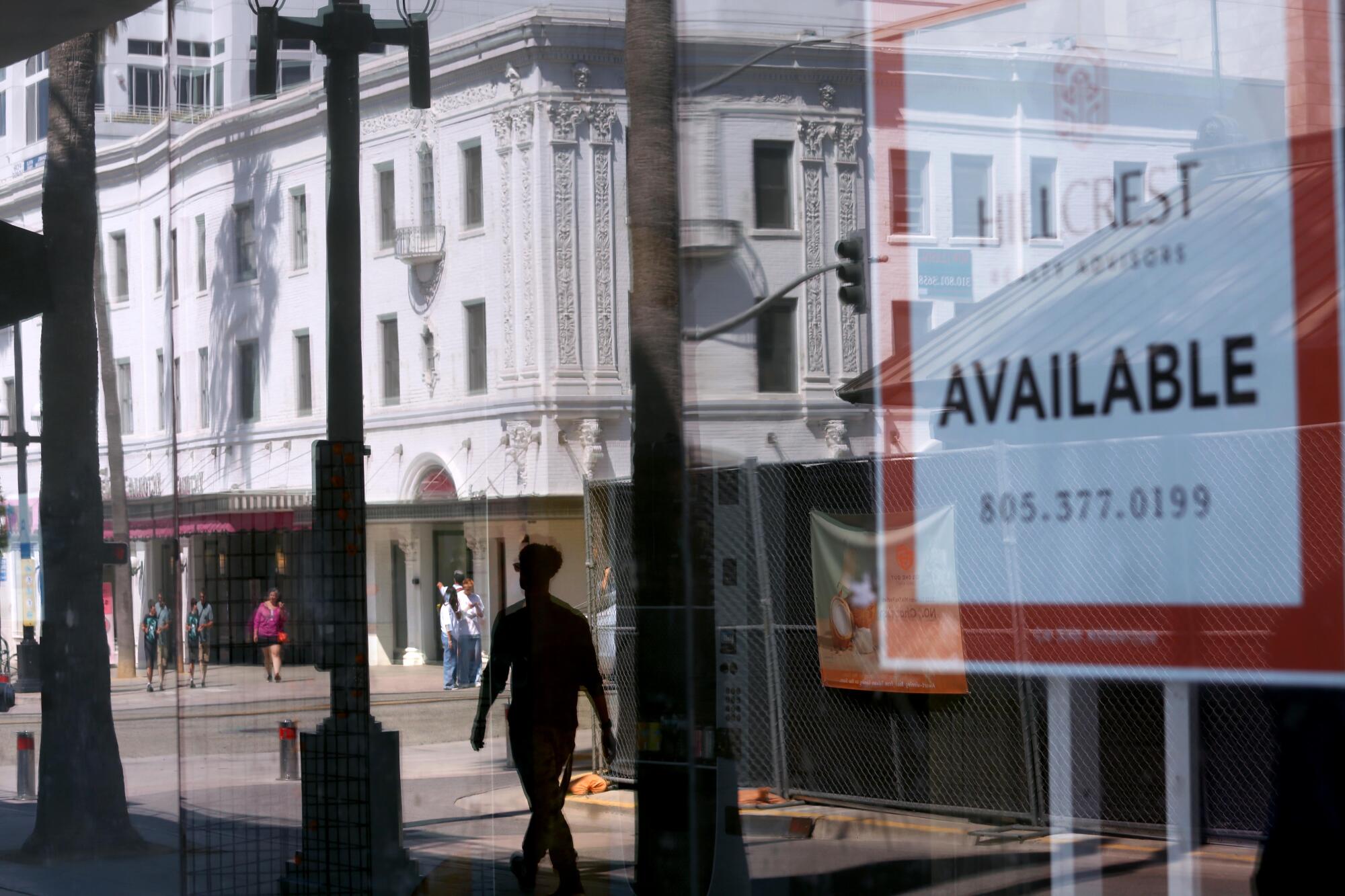
On a recent weekday, “Optimus Crime,” a large mobile police command center that bears a resemblance to a Transformer, was parked at a crosswalk on the Promenade. Nearby, a banner hung over one of the mall’s vacant storefronts proclaiming, “Santa Methica is Not Safe.”
For the record:
7:47 p.m. July 17, 2024An earlier version of this article said that John Alle manages 15,000 square feet of space on the Promenade; some of that space is elsewhere.
John Alle, who co-founded the Santa Monica Coalition about two years ago to bring attention to public safety issues in the city, manages about 15,000 square feet of commercial real estate, including the storefront where the sign hangs.
He said rampant theft and the near constant presence of homeless people forced one of his tenants in the building to leave. And although the sign probably is counter-productive to bringing people to the Promenade, Alle said he hopes the public shaming will prompt tourists and other visitors to demand the city do more to help the Promenade.
“I don’t think it’s going to deter shopping,” he said. “There’s not much shopping going on there.”
The high-profile success of the promenade in the 1990s also planted the seeds of the current struggle to keep stores occupied, experts said.
Third Street for decades was Santa Monica’s main commercial strip, but by the late 1950s it was laboring to keep up with new regional shopping centers. After a lengthy renovation in 1989, when the mall was renamed as the Third Street Promenade, real estate developer Shaul Kuba and his partners started acquiring troubled properties on the Promenade at a deep discount and set out to find a flashy national tenant that could serve as a bellwether.

They managed to land a Disney Store, and the match was lit, Kuba said. “That opened the door for a lot of other retailers — J. Crew, Banana Republic, Old Navy.” The Promenade began to thrive after a long stretch as a retail backwater.
But in recent years these “big box” stores have been hurt by competition from online sellers and narrowly-focused specialty retailers.
They have adapted by opening fewer, smaller stores, which is a problem for the Promenade. As tenants have departed, they have left behind uncommonly large spaces because of Third Street’s history as a prime retail venue serving large stores.
“I think every landlord is hoping a big box is coming back, and sometimes they do, but really, across the country retailers are shrinking,” said retail property broker Christine Deschaine of Kennedy Wilson Brokerage.
Out of necessity, landlords are getting creative in an effort to fill the space and adapt to the changing expectations and habits of consumers, who now rely heavily on online purchasing. Shoppers, said Lars Perner, who teaches clinical marketing at USC’s Marshall School of Business, want a unique experience, an antidote to the big chains that provide mass-produced products.
“The idea that you’re getting something special is what draws crowds,” Perner said.
Santa Monica’s once-bustling Third Street Promenade is dotted with empty storefronts. An indoor pickleball club could point to creative ways for filling them.
What was once a JCPenney and later Banana Republic is now a roomy, upmarket John Reed Fitness gym. Pickleball is played at a hybrid clothing retailer, sports club and restaurant Pickle Pop, which occupies 10,000 square feet that was once an Adidas store. The top floor of a closed food court will be transformed into a “golf experience” that may include miniature golf, Deschaine said.
Other large store spaces may be carved into units for smaller tenants, as has been done successfully on nearby 2nd Street, Deschaine said.
Some noteworthy retail tenants are already on the way, she said, including a technology company she declined to name that has agreed to take a prime space at the Broadway entrance to the Promenade. Also generating buzz is the pending arrival on the Promenade of Raising Cane’s Chicken Fingers, a Louisiana fast-casual restaurant chain.
Restocking the Promenade with tenants is a tall order in part because of its overall size, said Devin Klein, a property broker with JLL.
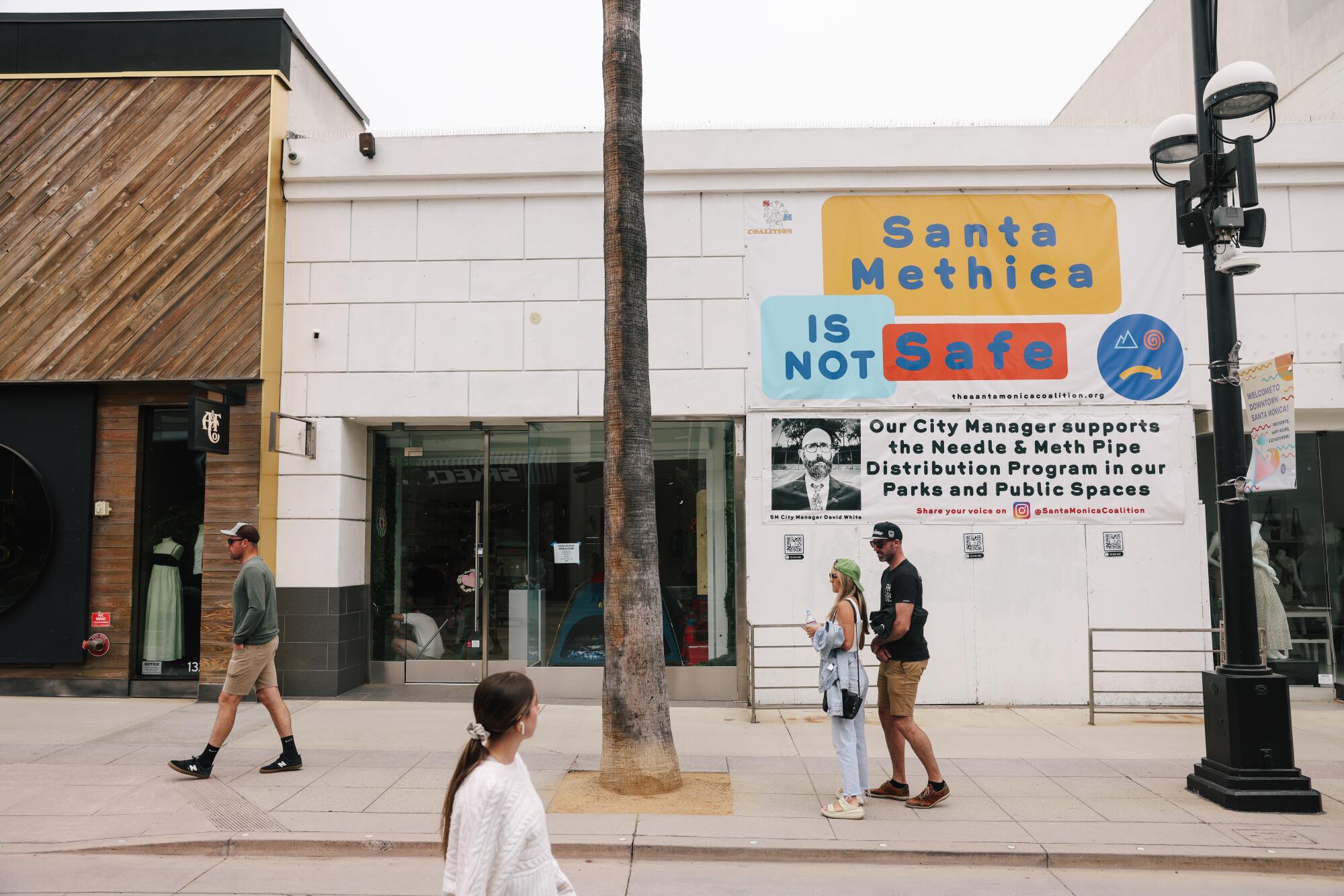
The Promenade and Santa Monica Place mall next door have a combined total of more than 1 million square feet, he said, about twice as much as the Grove shopping center in Los Angeles.
At its low point during the pandemic toward the end of 2020 and into 2021, vacancy on the Promenade rose to 30% to 35%, Klein said, and is now between 20% and 25%.
That improvement can be attributed to some property owners accepting that they can’t demand as much rent as they used to get when the market was hotter and landlords came to believe they could charge tenants “Rodeo Drive rents,” said Brock, Santa Monica’s mayor.
“We were never Rodeo Drive,” he said.
“Landlords have really started to play ball with retailers and adjust their rent according to the market,” Klein said, “which has allowed more spaces to get leased.”
Over the last several years, Santa Monica city officials have tried to make it easier to open and run a business on the Promenade.
It has eased restrictions on the types of operating permits it issues in an effort to reverse a past in which it “micromanaged a little bit and maybe went overboard” on what businesses could set up shop, said David Martin, the city’s community development director.
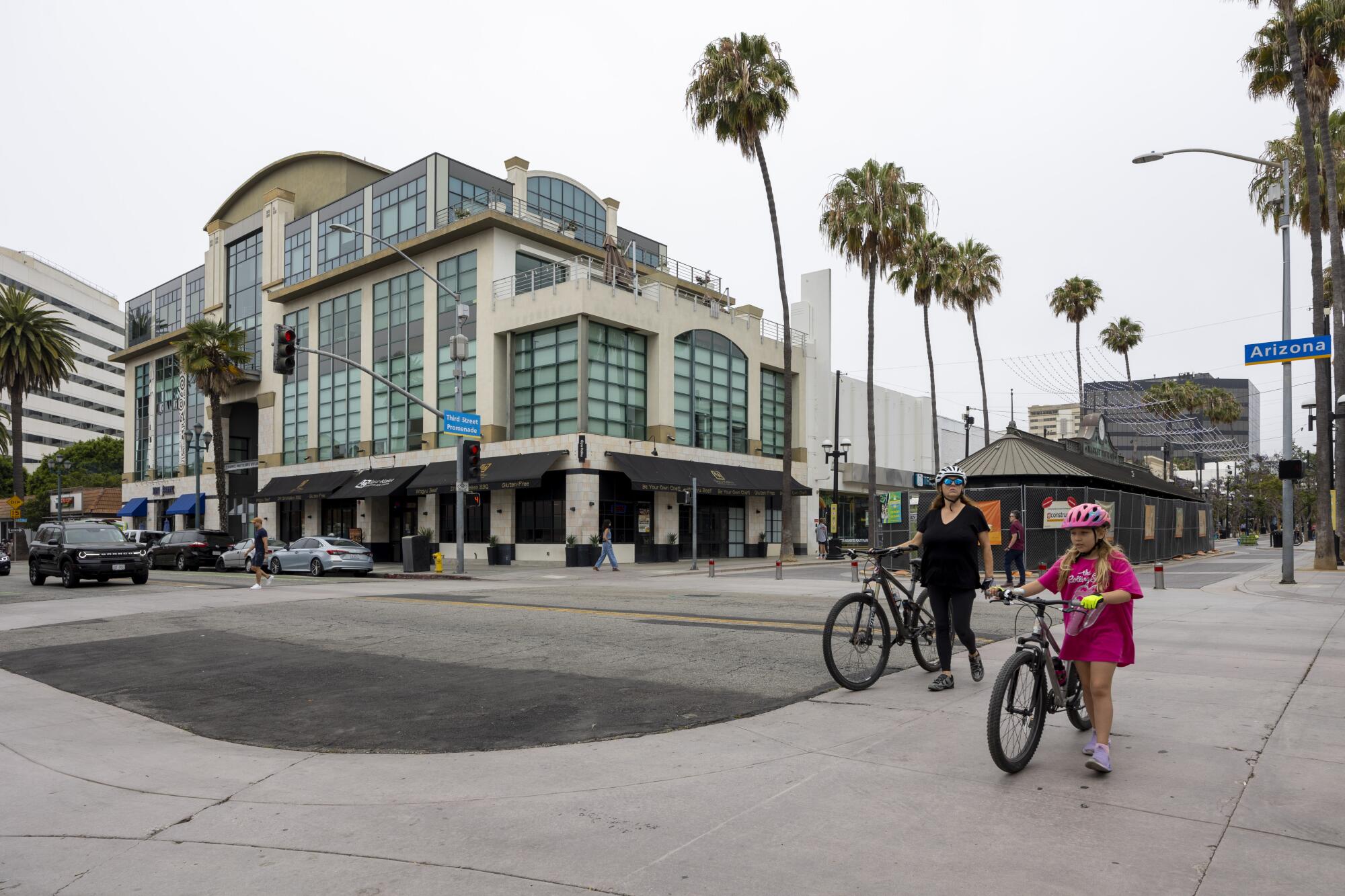
For example, a quota on how many restaurants are allowed on a city block has been eased and a cumbersome entitlement process that effectively prevented pop-up events has been removed.
“We are trying to make sure that the city process is as clear as possible, as fast as possible, and then leave it to the market to bring in the kinds of businesses that the public is demanding,” Martin said.
For several years, Santa Monica city officials have had a blueprint to dramatically transform the Promenade itself, which hasn’t seen meaningful changes in decades.
A proposal, dubbed Promenade 3.0, was devised in 2019 at the behest of the city and Downtown Santa Monica Inc. a nonprofit that works with the city to manage the downtown area. The plan by architecture firm RIOS would cost about $60 million and is intended to make the Promenade more engaging to visitors so they linger and shop more.
A primary goal would be to stop funneling people through the middle of the street and encourage them to circulate in a loop pattern. Curbs might be eliminated to make it feel less like a closed street. Rooftop restaurants would be encouraged. Additions could include beer gardens, water features, a viewing tower and small pop-up retail stations to incubate new stores.
The proposal was stalled by pandemic-related challenges including plummeting city tax revenue that could have helped fund it, RIOS architect Nate Cormier said.
Martin said that property owners on the Promenade could fund the initiative, but there’s nothing in the works.
“The idea of completely redoing the Promenade like was done in like the ’80s, that’s not currently on the table,” he said.
Nevertheless, the city’s seaside location will continue to make it a draw for visitors and businesses, encouraging recovery of the Promenade, Klein said.
“You can never change the fact that it’s still one of the prettiest areas in the world,” he said. “There’s always going to be some kind of a bounceback when you have this kind of real estate. Let’s face it — you’re a couple blocks from the ocean.”
More to Read
Inside the business of entertainment
The Wide Shot brings you news, analysis and insights on everything from streaming wars to production — and what it all means for the future.
You may occasionally receive promotional content from the Los Angeles Times.
